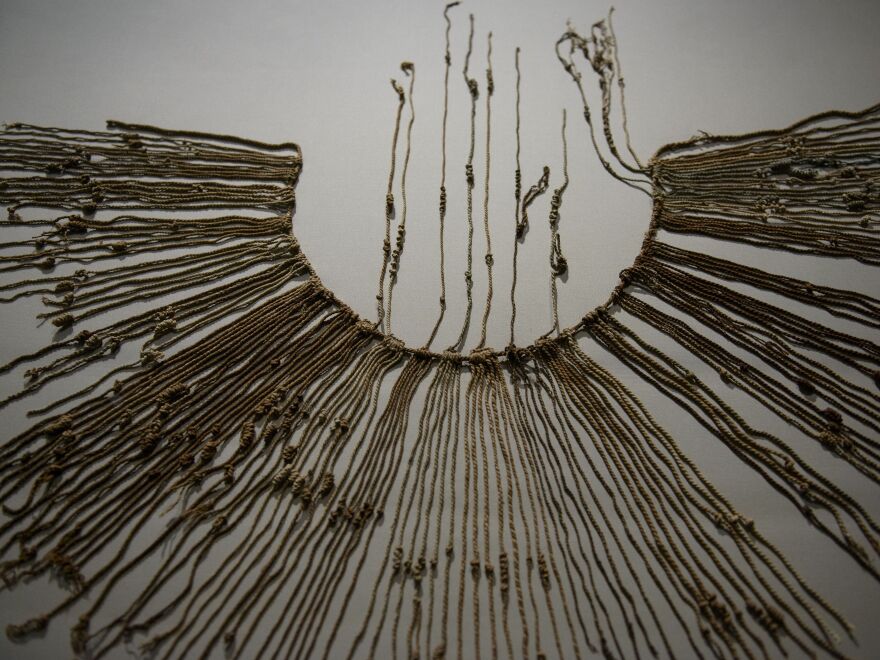One of the most influential pre-Columbian empires in South America, the Inca Empire is renowned for a number of inventions, including the construction of Machu Picchu, a vast road system, and an agricultural terrace system. The society’s record-keeping technique, known as khipu, which uses a system of tying knots to store information, was arguably the most distinctive.
Although it has long been believed that the governing classes of this civilization were the only ones who produced khipu, a recent examination of a human hair cord suggests that even lower-class commoners may have participated in this custom.
The finding might encourage additional scientists to test more khipus that are housed in museum collections and help researchers rewrite their understanding of this facet of Incan society.
At the time, the Incas’ dominion was the biggest in the New World. According to Sabine Hyland, a scholar at the University of St. Andrews in Scotland, “it covered half of a continent, pretty much.” She notes that this enormous kingdom, which had millions of inhabitants, relied solely on knotted ropes to keep records.
According to Kit Lee, a research associate at the university, the Inca Empire is frequently mentioned as the one exception to the general rule that empires must have a written language, but this is only because “khipus get overlooked as a form of writing.”
Long, colorful ropes are knotted in knots to create these odd recording devices. Cords usually hang from a single, thick central thread like pendants. Only a small portion of the ancient Incan khipus have survived since the Spanish overthrew the Inca Empire in 1532.
However, a khipu was recently obtained by Hyland’s university, and radiocarbon dating revealed that it dated from approximately 1498. At first, Hyland thought it was composed of llama or alpaca hair.
Then she showed Lee, though. “Kit looked at me and said, ‘Sabine, this primary cord is human hair,'” Hyland recalled.
The researchers were aware that, in the past, using hair may act as a sort of signature to identify the maker of the khipu. This gave them a unique chance to learn more about the maker of a famous khipu.
Years of growth are symbolized by the roughly three-foot-long hairs in this one. To find out what this person must have consumed during their lifetime, the researchers collected samples from both ends of a strand and performed a laboratory study of elements like carbon and nitrogen.
They and their colleagues write in the journal Science Advances that the hair was from a person who consumed cereals, legumes, and tubers. The usual diet of the ruling elite consisted of meat and maize beer, neither of which they observed in excess.
According to Hyland, a high-ranking official might decide to abstain from meat for some reason, but it’s improbable that they could survive without consuming a lot of maize beer. “It’s not really possible to escape drinking it,” Hyland explains. “Even today, in the Andes, when you participate in rituals, you have to drink what you are given.”
The idea that khipu production and literacy may have been more common in the Inca Empire than the Spanish colonists believed and documented in their tales is strengthened by this hair study.
According to Lee, this implies a connection between the Incan Empire’s khipus and more contemporary khipus produced in the 1800s and beyond.
According to Lee, “modern khipus tend to be made by lower-status people hacienda workers, peasant laborers, herders,” describing how they differ in shape and structure from their ancient counterparts. While some contemporary khipus are interred with loved ones during funeral ceremonies, others encode agricultural records.
“It’s been pretty controversial to draw this continuity between Inca khipus and modern khipus, partly because of the perception that Inca khipus were made by elites,” Lee explains.
This study is “unprecedented” in the manner in which it examined the hair, according to Harvard University khipu expert Manny Medrano, who was not involved in it.
He claims that although experts have long observed human hair in khipus, this is the first one from the Inca era that he is aware of that has a principal cord composed completely of human hair. “The main cord is really important in khipus,” Medrano explains.
According to him, this study is likely to prompt a reexamination of previously examined khipus, as museums house hundreds of them that have never been examined by experts.
“I would not not be surprised if we find other khipus with substantial amounts of human hair in them in the future,” he says, adding that the hair could offer a different perspective on khipu production in the Inca Empire than the narratives recorded by colonizers, who might not have fully comprehended what was actually happening.
“Ultimately, this gets us closer to being able to tell Inca histories using Inca sources,” Medrano says. “We need to tell a story of literacy and of writing and of recordkeeping in the Inca Empire that is way more plural, that includes folks who have not been included in the standard narrative.”
Copyright 2025 NPR






